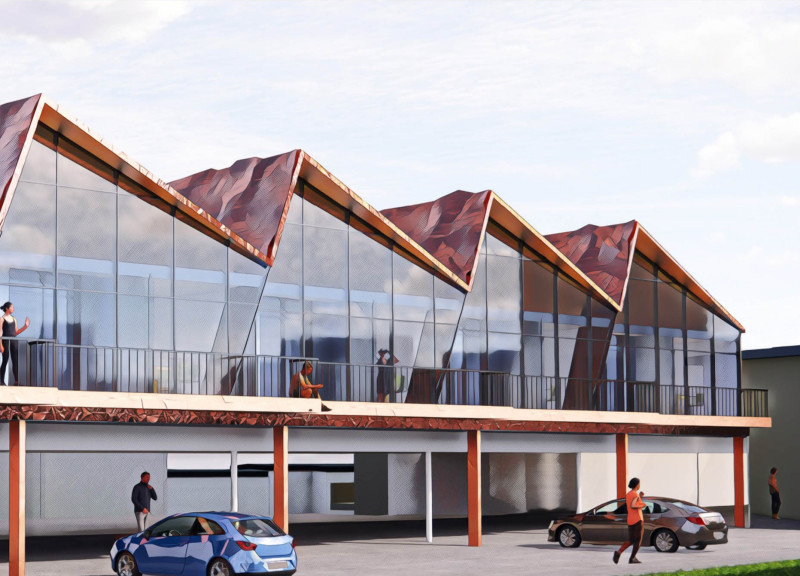5 key facts about this project
The design addresses critical housing needs in San Francisco, a city known for high living costs and limited affordable options. By placing modular housing units above existing parking lots and flat rooftops, the design aims to increase urban density and make better use of available space. The overall concept blends sustainability with practicality, providing a viable solution for those seeking affordable living in a challenging market.
Materiality and Sustainability
Sustainability is a key focus, exemplified by the solar panels installed on the modular units. These panels face south at a 23-degree angle, maximizing their ability to capture energy from the sun. This setup ensures that the living spaces can generate their own energy, supporting both the residents' needs and local energy regulations.
Crumpled metal foil serves an important role in the design. Positioned beneath the solar panels, it reflects infrared radiation, which helps to keep the units cooler. Metal layer glazing is applied to other sides of the buildings to effectively address indirect sunlight, enhancing thermal performance and creating a comfortable indoor environment.
Functional Layout and Design Elements
The modular units feature layouts that cater to various living needs, with options for one-bedroom and two-bedroom apartments. Each apartment comprises two modules, designed to make the most of available space. The setup includes kitchens, living and dining areas, and bathrooms, striking a balance between private and shared spaces.
Natural light is a fundamental design consideration, highlighted by the use of large windows throughout the units. These generous openings offer beautiful views and allow ample sunlight to pour into the living spaces, reducing the need for artificial lighting during the day. This focus on natural light helps create warm and inviting interiors.
The design exemplifies modern sensibilities while addressing practical housing challenges. By repurposing underused urban areas into functional residential spaces, it presents a thoughtful response to the ongoing housing issues in the city. The approach combines sustainability and livability, ensuring that residents have access to energy-efficient homes in a crowded urban setting.






















































